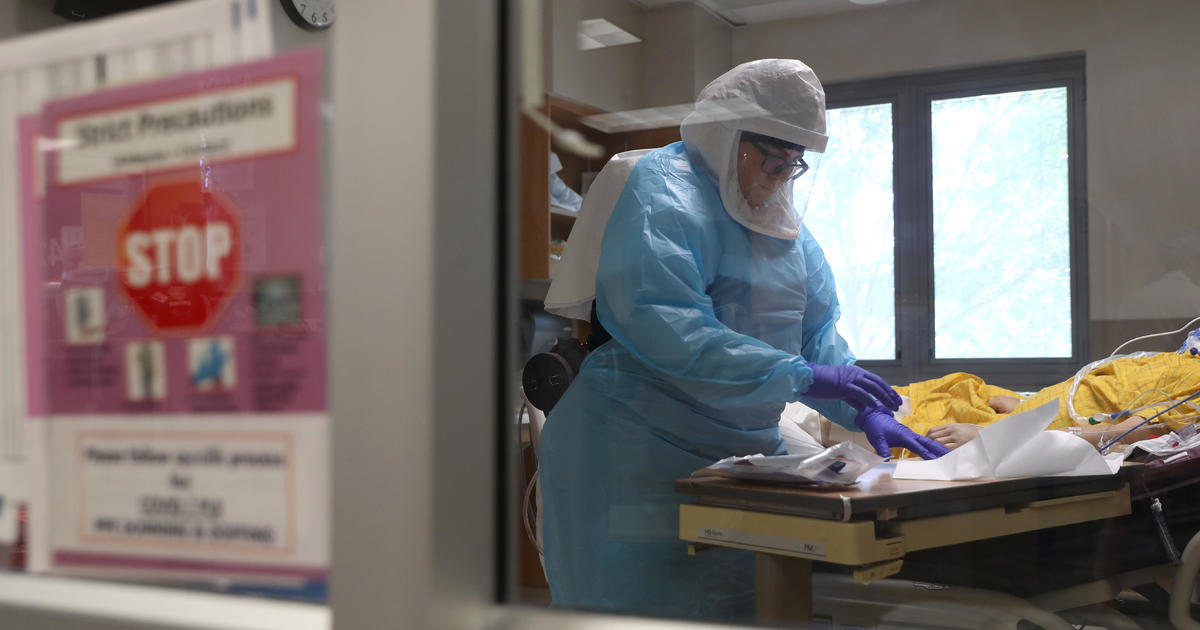
A new study of COVID-19, based on data from a symptom tracking app, found that there are six different “types” of the disease that involve different groups of symptoms. The discovery could open new possibilities for how doctors can best treat individual patients and predict what level of hospital care they would need.
Researchers from King’s College London studied data from approximately 1,600 patients in the United Kingdom and the United States who regularly recorded their symptoms on the COVID Symptom Tracker app in March and April.
Doctors will usually look for key symptoms like cough, fever and loss of sense of smell to detect COVID-19. The study, which has not been peer-reviewed, says the six different “types” of COVID-19 can vary by severity and present their own set of symptoms.
“I think it is very, very interesting,” Dr. Bob Lahita, who is not affiliated with the study, told CBSN presenters Vladimir Duthiers and Anne-Marie Green. “Among the patients I see, those who recovered, many of them present different forms: some people with fever and others without fever, and some with nausea and vomiting, some people with diarrhea, etc. “
The six groups of symptoms described in the study are:
- Flu without fever: Headache, loss of smell, muscle aches, cough, sore throat, chest pain, no fever.
- Flu with fever: Headache, loss of smell, cough, sore throat, hoarseness, fever, loss of appetite.
- Gastrointestinal: Headache, loss of smell, loss of appetite, diarrhea, sore throat, chest pain, no cough.
- Level one severe, fatigue: Headache, loss of smell, cough, fever, hoarseness, chest pain, fatigue.
- Severe level two, confusion: Headache, loss of smell, loss of appetite, cough, fever, hoarseness, sore throat, chest pain, fatigue, confusion, muscle pain.
- Three severe level, abdominal and respiratory: Headache, loss of smell, loss of appetite, cough, fever, hoarseness, sore throat, chest pain, fatigue, confusion, muscle pain, shortness of breath, diarrhea, abdominal pain.
The first level, “flu-like without fever,” is associated with headaches, loss of smell, muscle aches, cough, sore throat, and chest pain. Patients at this level have a 1.5% chance of needing respiratory support, such as oxygen or a ventilator.
The second type, “flu-like with fever,” includes symptoms such as loss of appetite, headache, loss of smell, cough, sore throat, hoarseness, and fever. The researchers say that about 4.4% of patients at this level needed respiratory support.
Patients with the third type, simply described as “gastrointestinal”, do not have a cough as part of their illness. Instead, they experience headache, diarrhea, loss of smell, loss of appetite, sore throat, and chest pain, and about 3.3% need respiratory support.
Lahita referred to the following three groups of COVID-19 as the “really severe types”.
In type four, or “severe level one,” patients experience fatigue along with headache, loss of smell, cough, fever, hoarseness, and chest pain. Patients at this level required respiratory support at a rate of 8.6%.
Type five, “severe level two,” includes type four symptoms along with loss of appetite, sore throat, and muscle pain, and is primarily distinguished by confusion.
“That means you don’t know where you are or where you live, whether you are in or out of the hospital, who your family members are,” Lahita explained. “That is very scary.” Almost 10% of patients at that level require respiratory support.
The most serious type of COVID-19 is known as “severe, abdominal and respiratory level three,” and it has all of the above symptoms along with abdominal pain, shortness of breath, and diarrhea. Almost 20% of these patients need respiratory support.
“Those are the severe levels of three that end in a respirator, and then it’s easy to know if they survive the infection entirely,” Lahita said.
The UK researchers also found that only 16% of patients with COVID-19 type one required hospitalization, compared to almost half of patients with type six.
Patients in the severe groups also tend to be older or with pre-existing conditions and weakened immune systems, compared to those in the first three.
Scientists hope the discovery, once again studied, can help predict what types of care patients with COVID-19 might need, and give doctors the ability to predict which patients would fall into which category.
“I am very pleased that these six types have been identified and can give us an idea of a future prognosis for patients with this virus,” said Lahita.
.